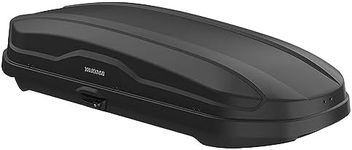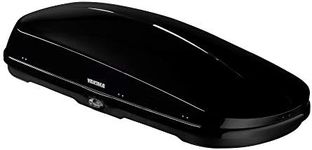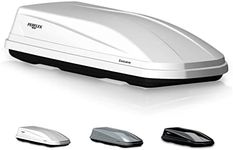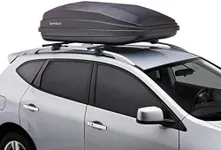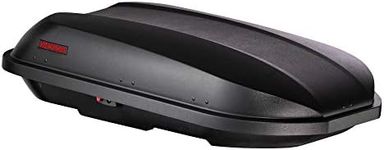Buying Guide for the Best Roof Boxes
Choosing the right roof box for your vehicle can significantly enhance your travel experience by providing extra storage space. The key to selecting the best roof box is to consider your specific needs, the type of vehicle you have, and the kind of items you plan to store. By understanding the key specifications and how they relate to your requirements, you can make an informed decision that ensures convenience, safety, and satisfaction.CapacityCapacity refers to the amount of storage space available inside the roof box, usually measured in liters. This spec is important because it determines how much you can carry. Roof boxes typically range from around 300 to 600 liters. If you plan to carry a lot of gear, such as camping equipment or luggage for a family trip, you might need a larger capacity. For occasional use or smaller loads, a smaller capacity might suffice. Consider the volume of items you usually transport to choose the right capacity for your needs.
DimensionsDimensions refer to the length, width, and height of the roof box. This spec is crucial because it affects how well the box fits on your vehicle and how much it can hold. Longer boxes are great for skis and snowboards, while wider and taller boxes can accommodate bulkier items. Measure your vehicle's roof and consider the types of items you plan to store to ensure the dimensions are suitable. Also, ensure the box does not obstruct your rear hatch or antenna.
WeightWeight refers to the empty weight of the roof box itself. This is important because it affects the overall load on your vehicle's roof and your ability to install and remove the box. Roof boxes can weigh anywhere from 10 to 25 kilograms. Lighter boxes are easier to handle and may be preferable if you frequently install and remove the box. However, heavier boxes might offer more durability and security. Check your vehicle's roof load limit and consider your own handling capabilities when choosing the weight.
MaterialMaterial refers to the construction material of the roof box, which can impact durability, weight, and weather resistance. Common materials include ABS plastic, fiberglass, and aluminum. ABS plastic is lightweight and affordable, making it a popular choice. Fiberglass is more durable and resistant to impacts but can be heavier. Aluminum is strong and lightweight but often more expensive. Consider the typical weather conditions you will encounter and the level of durability you need when selecting the material.
Mounting SystemThe mounting system refers to how the roof box attaches to your vehicle's roof rack. This is important for ease of installation and security. Common systems include U-bolts, clamps, and quick-release mechanisms. U-bolts and clamps are secure but may take longer to install. Quick-release mechanisms are faster and more convenient but can be more expensive. Consider how often you will need to install and remove the box and your comfort level with different mounting systems when making your choice.
AerodynamicsAerodynamics refers to how the shape of the roof box affects air resistance and, consequently, fuel efficiency and noise levels. Aerodynamic boxes are designed to reduce drag, which can improve fuel efficiency and reduce wind noise. These boxes typically have a sleek, tapered shape. If you plan to use the roof box frequently or for long trips, an aerodynamic design can save you money on fuel and provide a quieter ride. For occasional use, aerodynamics might be less of a concern.
Security FeaturesSecurity features refer to the locks and other mechanisms that keep your belongings safe inside the roof box. This is important to prevent theft and ensure your items are secure during travel. Look for boxes with sturdy locks, preferably with multiple locking points. Some boxes also offer additional security features like reinforced lids or tamper-proof designs. If you plan to store valuable items or leave the box unattended, prioritize security features to protect your belongings.



